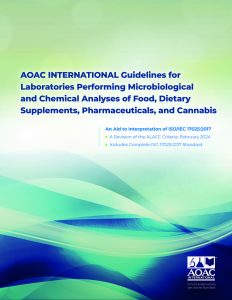
The AOAC INTERNATIONAL Guidelines for Laboratories Performing Microbiological and Chemical Analyses of Food, Dietary Supplements, Pharmaceuticals, and Cannabis, An Aid to Interpretation of ISO/IEC 17025:2017 was created by the Analytical Laboratory Accreditation Criteria Committee (ALACC) to provide a section-by-section interpretation of requirements.
ALACC is a multinational group of experts from varied scientific disciplines and industries, and part of AOAC’s Technical Division for Laboratory Management (TDLM).
The ALACC Guide, ISBN 0935584-90-0, is a softbound book available plus shipping from the AOAC Store.
| Print Guide | Item #ALACC24-P | Member Rate: $234 | Non-Member Rate: $292 |
A searchable digital online publication, available through individual use and organizational licenses.
| Individual Use License | Item #ALACC24-O | Member Rate: $234 | Non-Member Rate: $292 |
Purchase print and online together and save.
| Bundle | Item #ALACC24KIT | Member Rate: $374 | Non-Member Rate: $467 |
| 6-10 Items | 10% |
| 11-20 Items | 15% |
| 21+ Items | 20% |